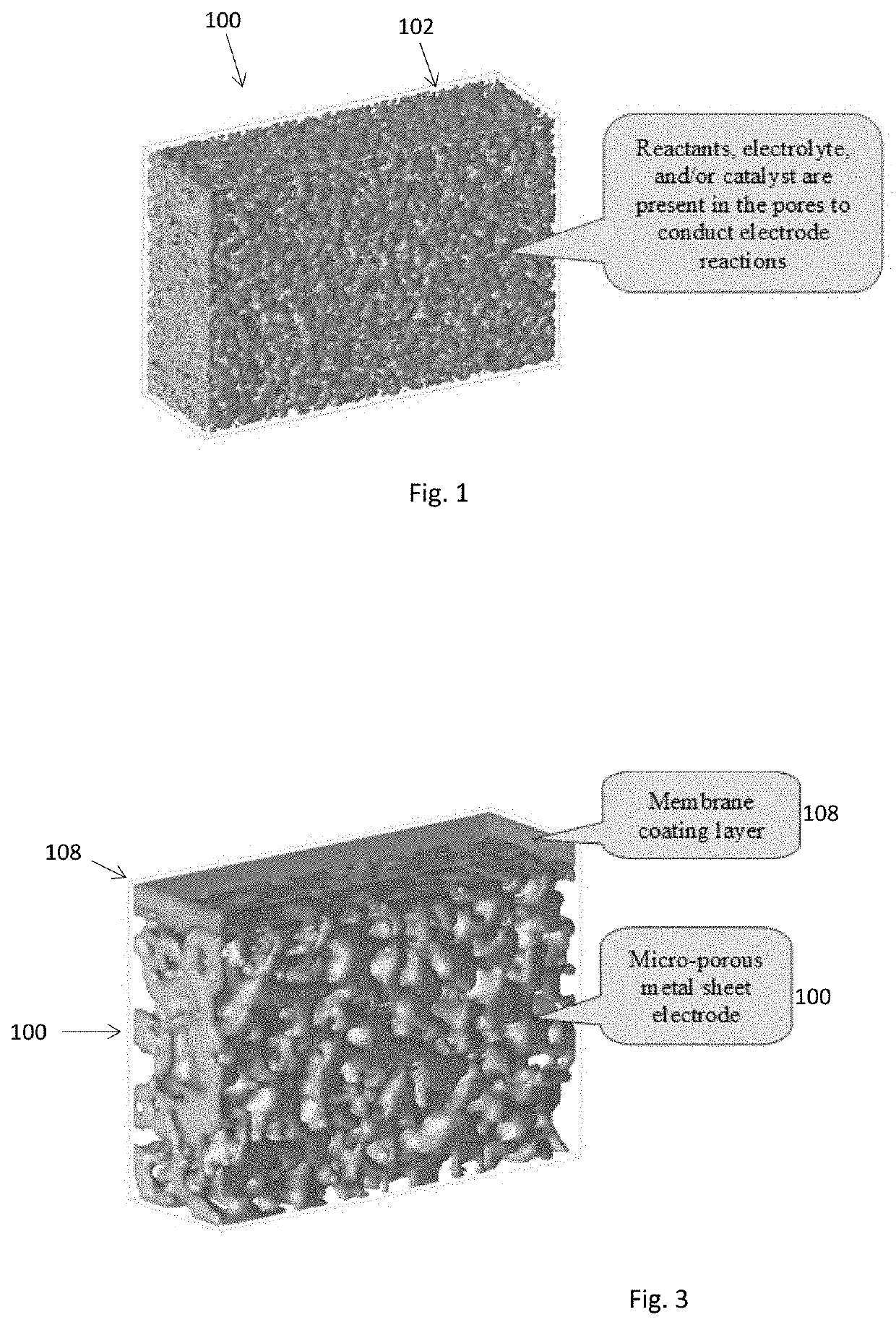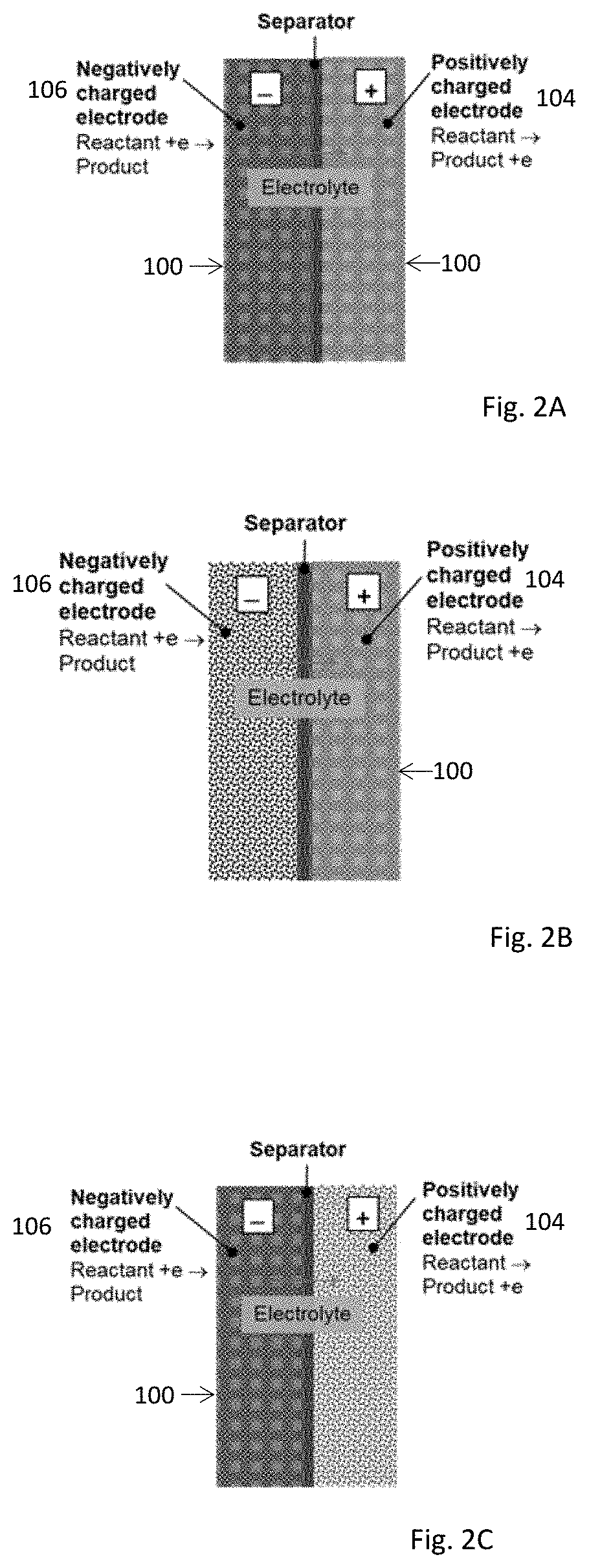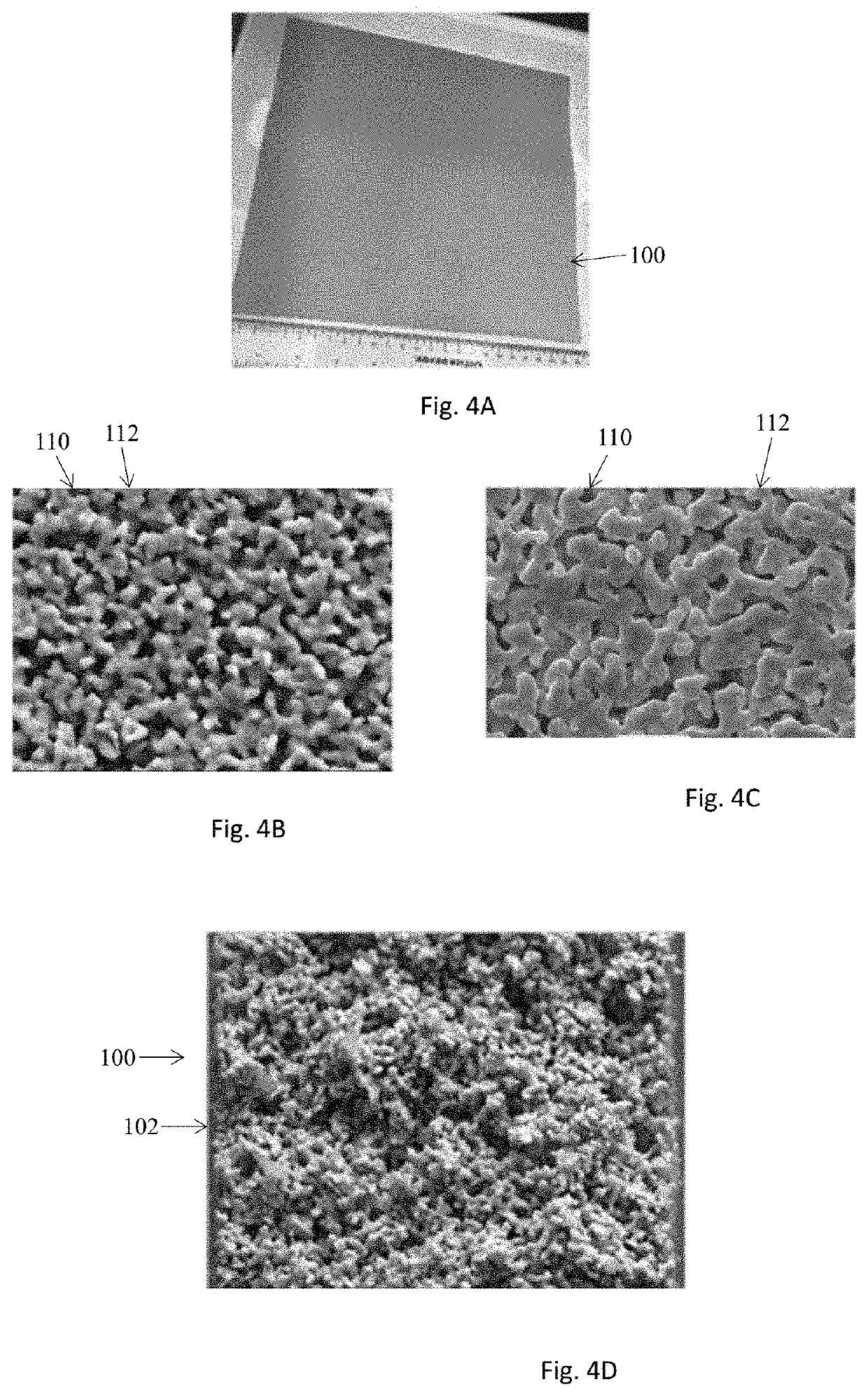Electrochemical Device Comprising Thin Porous Metal Sheet
a technology of porous metal and electrochemical devices, which is applied in the direction of electrochemical generators, cell components, electrochemical coatings, etc., can solve the problems of unstable polymeric supports, difficult preparation and use of ceramic-type materials, etc., and achieve the effect of enhancing the electron conductivity of the packed particle layer
- Summary
- Abstract
- Description
- Claims
- Application Information
AI Technical Summary
Benefits of technology
Problems solved by technology
Method used
Image
Examples
example i
Water Electrolysis with Thin Porous Ni Sheet Electrodes
[0075]The reactivity of micro-porous metal sheets 108 as an electrode is tested with a porous Ni alloy sheet 108 produced by Molecule Works Inc. (MWI) for water electrolysis. Two 2 cm×3 cm coupons were cut from of a porous Ni sheet of about 50 μm thickness and about 40% porosity. The coupons may be clamped together with a 0.5 mm thick polyester mesh separator to serve as respective positive and negative electrodes. The pair is then immersed in a KOH solution. Gas bubbles emerge from the two electrodes as the voltage applied to the two electrodes exceeds 1.3V. The current was recorded and compared to the other metallic materials in FIGS. 8A and 8B. The structural features of these materials are listed in Table 1 below. The comparative mesh materials have a material areal density of about 1.3 times of the MWI Ni sheet and a thickness about 20 times of the MWI's Ni sheet. FIG. 8A shows that the current obtained with MWI's Ni sheet ...
example ii
Coating of Porous Ceramic Membranes on the Porous Metal Sheet
[0078]A porous Ni sheet 100 made in-house is coated with ceramic materials to form an electrically-insulating layer 108 for separating two electrodes 104, 106 of opposite charges. Table 2 lists a group of ceramic coatings 108 on the 3 cm×5 cm Ni sheets 100 of slightly different thickness and porosity. The porous Ni sheet 100 is first coated with NiO-promoted yttria-stabilized-zirconia (Ni-YSZ) of 200 nm mean particles by vacuum filtering. The 50 nm YSZ particles are used to form a second coating 108. The coated sample is dried and sintered at 815° C. in a controlled gas environment. The amount of coating may be characterized by areal loading density (g / cm2), which may be calculated by normalizing the coating weight gain with the coated area. The coating thickness may be calculated from the difference in the thickness between the bare support sheet and the coated sheet. By varying the amounts of the coating solutions used t...
example iii
Ionic Conductivity of KOH-Immobilized Ceramic Membrane
[0081]The ceramic membrane 108 used for the test was formed by two-time vacuum coating and subsequent sintering. NiO-promoted YSZ of 200 nm particle size and YSZ of 50 nm particle sizes were used for first and second coating respectively. The coated sample was sintered at 750° under a controlled gas environment. The ionic conductivity is measured using electrochemical impedance spectroscopy (EIS) technique in an environmental chamber. The test setup is illustrated in FIG. 13A. The ceramic coating 108 is wetted by 50 wt. % KOH solution and then, a bare porous Ni sheet 100 is attached to the ceramic coating 108, which simulates the membrane electrode assembly 1300 in electrochemical conversion. The membrane electrode assembly 1300 is wrapped in carbon paper cover sheet 128. EIS plots of a membrane sample measured at different temperatures in 80% RH are shown in FIG. 13B. This membrane 108 was prepared on a porous Ni support sheet 1...
PUM
| Property | Measurement | Unit |
|---|---|---|
| porosity | aaaaa | aaaaa |
| pore sizes | aaaaa | aaaaa |
| porosity | aaaaa | aaaaa |
Abstract
Description
Claims
Application Information
 Login to View More
Login to View More - R&D
- Intellectual Property
- Life Sciences
- Materials
- Tech Scout
- Unparalleled Data Quality
- Higher Quality Content
- 60% Fewer Hallucinations
Browse by: Latest US Patents, China's latest patents, Technical Efficacy Thesaurus, Application Domain, Technology Topic, Popular Technical Reports.
© 2025 PatSnap. All rights reserved.Legal|Privacy policy|Modern Slavery Act Transparency Statement|Sitemap|About US| Contact US: help@patsnap.com



